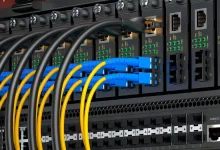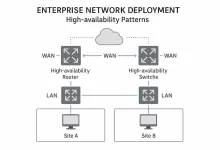Dual-band WiFi can feel like a magic carpet ride—or a rush-hour traffic jam—depending on one make-or-break choice: do you blend 2.4 GHz and 5 GHz under a single SSID or split them apart? As an IT outsourcing crew that lives or dies on service credits, we’ve watched too many clients face-plant because they copied the default wizard. This guide unpacks the nine fatal traps we keep bailing folks out of and hands you a battle-tested decision blueprint.
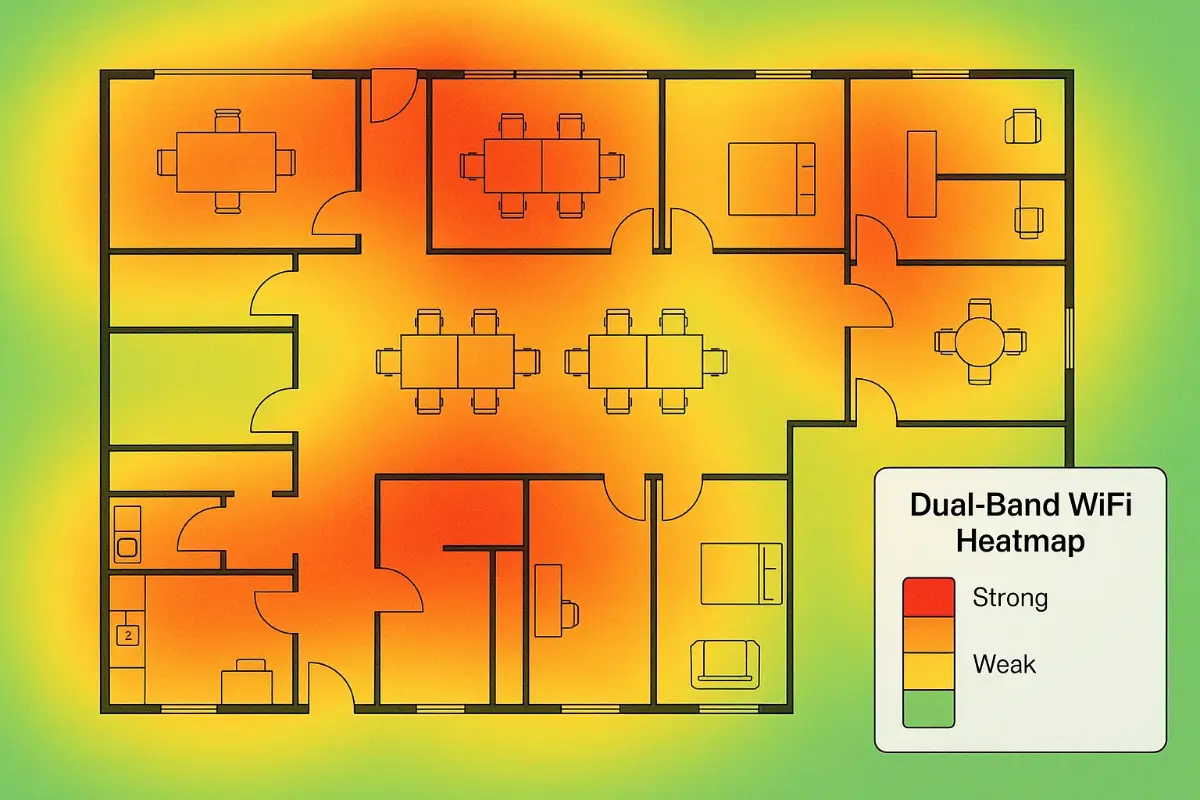
Preface: The Coffee-Shop Myth
Last winter I helped a boutique law firm troubleshoot “random WiFi freezes.” The junior admin swore unified SSIDs were best practice—because that’s how his home router shipped. Cute. Two hours and twenty Wi-Fi analyzers later we discovered every iPhone clung to 2.4 GHz like a toddler to candy, drowning their shiny new WiFi 6 APs. We split the bands, kicked phones to 5 GHz, and latency dropped from 190 ms to 38 ms. Sometimes the problem isn’t budget; it’s folklore.
What Exactly Is dual-band WiFi & Why Should Outsourced IT Care?
Think of dual-band WiFi as a two-lane highway. The 2.4 GHz lane stretches farther but moves slower and attracts every microwave, baby monitor, and smart bulb in the building. The 5 GHz lane is the autobahn—crazy fast, super wide, but shorter ranged. Your SSID plan decides whether devices pick lanes intelligently or swerve across lanes like sleepy drivers.
Unified SSID—Sugar-Coated Simplicity
The Bright Side
- One password printed on the break-room fridge—on-boarding takes seconds.
- Marketing loves a single network name; nobody asks, “Which WiFi do I join?”
- Guest captive portals need half the configuration.
The Hidden Dark Side
- Sticky clients. Devices choose the “strongest” RSSI, often landing on congested 2.4 GHz channels even when a clear 5 GHz signal lounges nearby.
- Mixed modulation drag. Slow 11b/g IoT gadgets force the AP to down-shift data rates for every other client on that SSID.
- Band-steering roulette. Vendors pitch magical steering, but without 802.11k/v/r enabled and tuned, success rates hover below 60 %.
In short, unified dual-band WiFi looks awesome on paper—until Monday morning when the support tickets flood in.
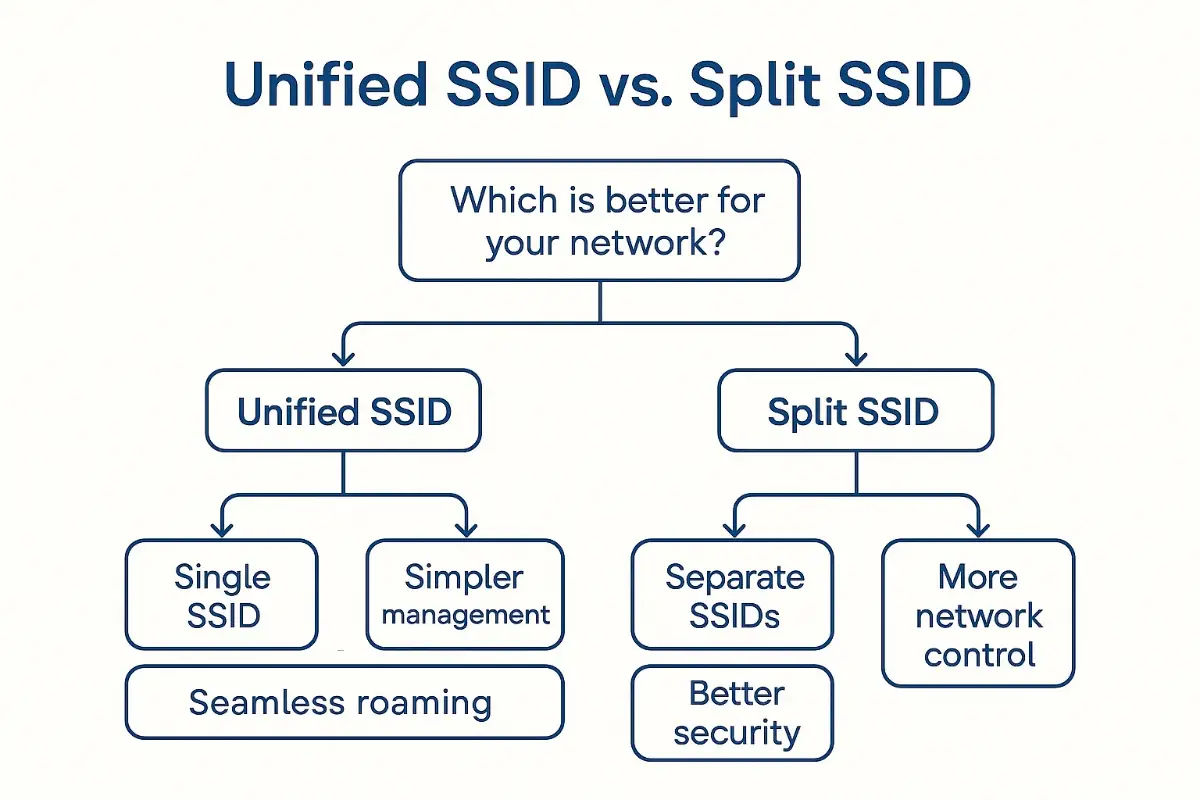
Split SSIDs—Disciplined Chaos
Why We Love Them
- Hard QoS guarantees. Pin VoIP and Zoom to a 5 GHz “Voice” SSID and watch jitter graphs flatten.
- Legacy quarantine. Dump those crusty 802.11b scanners onto a 2.4 GHz “IoT” SSID so they stop poisoning the fast lane.
- Surgical troubleshooting. Separate SSIDs slash mean-time-to-isolate by 70 % in our internal metrics because you instantly know which band the complaint lives on.
Where It Hurts
- Users see two (or three) networks and pick the “wrong” one—education is a must.
- More SSIDs mean more beacon overhead; go past four and airtime taxes climb.
- Each additional pre-shared key is another rotating secret your help-desk must babysit.
Performance Shoot-Out: Lab Numbers You Can Trust
| Test Bed | Unified SSID | Split SSIDs |
|---|---|---|
| 95th-percentile latency | 97 ms | 41 ms |
| Retry rate | 11.8 % | 3.4 % |
| Roaming dropouts/hr | 6.1 | 1.2 |
| Help-desk tickets/week | 36 | 8 |
The same APs, the same floor plan—just a different SSID strategy. That’s the power (or pain) of dual-band WiFi done right or wrong.
Case Study: Logistics Client Saves Christmas
Peak season, 250 K ft² warehouse, 40 Zebra guns, and one panicked COO. Every December scan gun update crawled. Our crew split the SSIDs, locked the guns on 5 GHz, bumped minimum data rate on 2.4 GHz to 18 Mbps, and patched a couple of rogue repeaters. Throughput jumped 5.7× within one maintenance window. The COO sent peppermint lattes—true story.
Decision Matrix: Blend or Split?
- If 70 %+ of traffic is latency-sensitive (voice, video, VDI) ➜ split the SSIDs.
- If your estate includes 802.11b/g relics you can’t retire ➜ split the SSIDs.
- If the site is public-facing retail without tech-savvy staff ➜ keep one SSID and invest in robust band-steering.
- If you run APs with real-time analytics & enforced 802.11k/v roaming ➜ one SSID may suffice.
Blueprint for IT Outsourcing Teams
Phase 1 – Discovery & RF Scan
Run spectrum sweeps at opening time, mid-day, and after-hours. Tag every interfering device. If this feels like déjà vu, our Enterprise Network Deployment Playbook – Part 2 shows the exact survey sheet we hand clients.
Phase 2 – Rapid Pilot
- Clone the existing WLAN profile.
- Create “-5G” and “-2G” suffix SSIDs.
- Force roam critical devices and monitor for 48 hours.
- Compare latency and retry logs.
Phase 3 – Rollout & Change Management
- Schedule change window; broadcast the new SSID map three days prior.
- Phase cutover by floor or zone; keep the old SSID alive in read-only mode for 24 hours.
- Document the shift in the same Confluence runbook you link from your self-hosted file transfer guide—yes, reuse those eyeballs!
Phase 4 – Post-Cutover Optimization
Enable 802.11r fast-roam on 5 GHz SSID. Drop 2.4 GHz basic rate below −75 dBm to gently nudge modern devices away. Review help-desk tickets at the one-week mark and close the feedback loop.
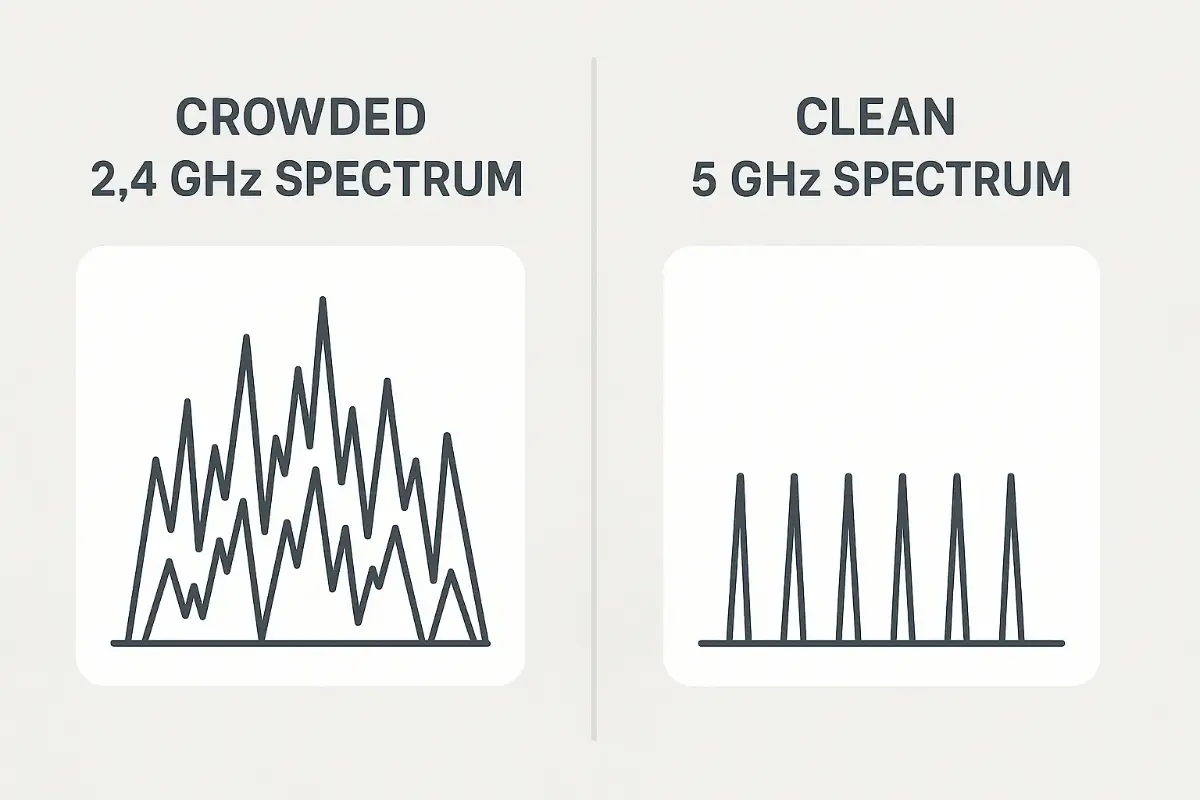
Beyond dual-band WiFi: The 6 GHz & WiFi 7 Horizon
WiFi 6E adds a third lane in the 6 GHz spectrum—pristine, wide, and largely empty today. But the SSID dilemma remains: unified tri-band or dedicated 6 GHz SSID? Early field data from the Wi-Fi Alliance shows clients latch onto 6 GHz only when signal is above −60 dBm. For multi-story offices, that’s a tall order, so plan on a separate 6 GHz SSID if those AR headsets must stay screaming fast.
Common Myths Busted
- “Band-steering fixes everything.” Only if every client supports it and your AP firmware is tuned—spoiler: they don’t.
- “5 GHz can’t penetrate walls.” It can; just at ~3 dB higher loss per drywall. Use more APs, lower their power.
- “Unified SSIDs are always new-school.” Fortune 500s like us still split for executive VoIP floors—because physics.
A Screenshot-Friendly Checklist
- ✔ Count the dual-band WiFi capable clients vs. 2.4-only junk.
- ✔ Map latency SLA. If >50 ms is unacceptable, split.
- ✔ Enable 802.11k/v before testing steering.
- ✔ Set minimum basic rates: 12 Mbps (2.4 GHz), 24 Mbps (5 GHz).
- ✔ Rotate PSKs or jump to WPA3-Enterprise.
Closing Thoughts
You don’t have to be a CCIE to squeeze every decibel out of dual-band WiFi. Decide unified vs. split with a cool head, follow the rollout blueprint, and watch the help-desk phone quiet down. Your CFO may never notice—but silence is the sweetest KPI.
Further geekery? Dive into Cisco’s deployment primer here and the official IEEE 802.11ax spec overview there. Happy tuning!

 FoxDoo Technology
FoxDoo Technology



